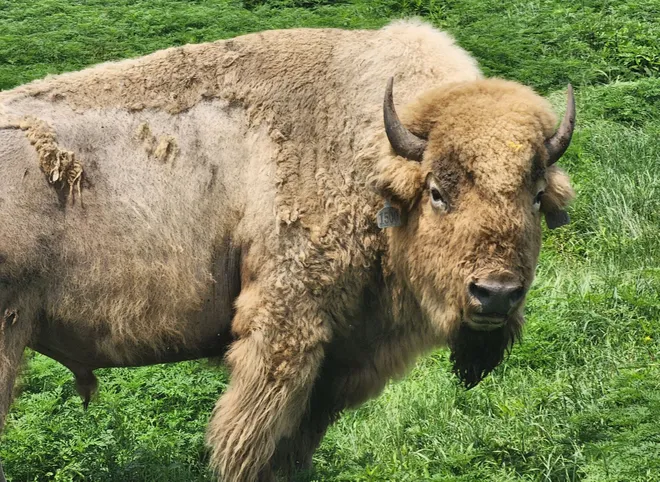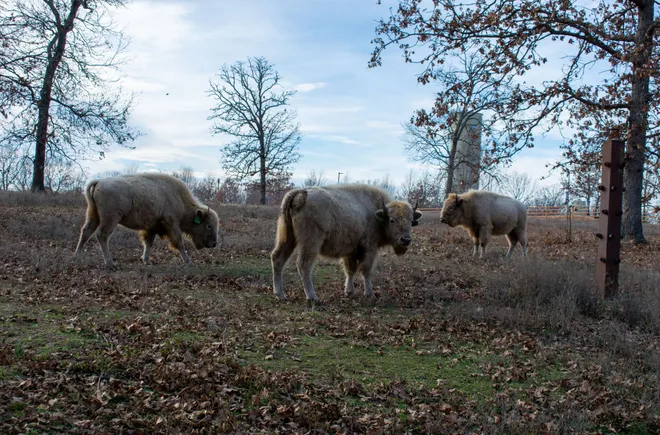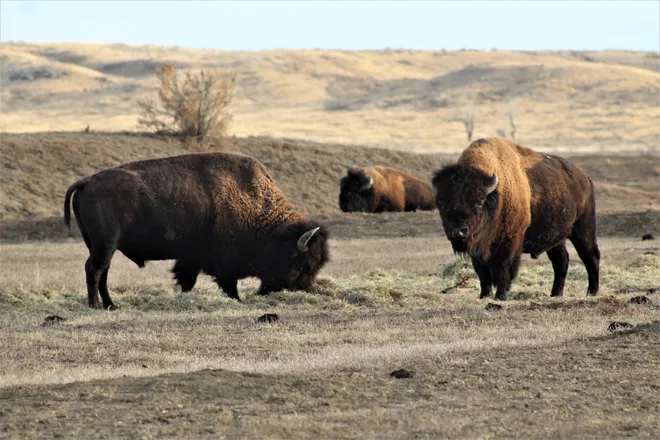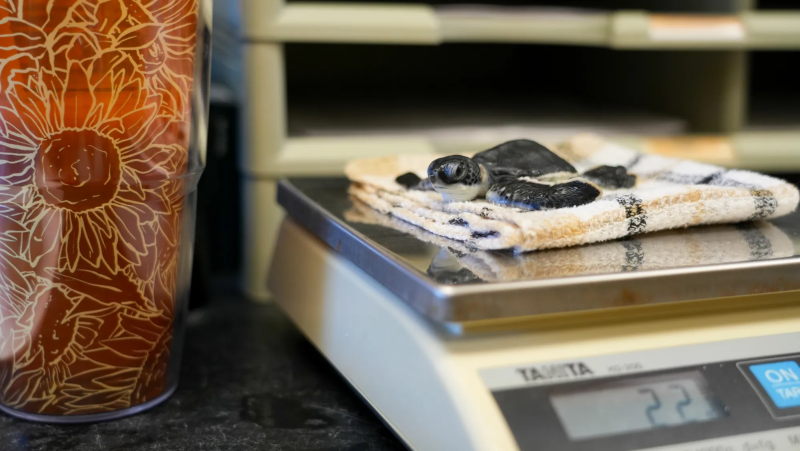White coat on Oklahoma bison makes him a tourist attraction, but Frosty's genes make him unique
Oklahoma-based buffalo Frosty isn’t just special because he sports a pearly white coat, he also happens to be “genetically pure.”
Frosty, who has lived on the Quapaw Nation, also known as O-Gah-Pah, since he was just a wee bison has inadvertently become a must-see for tourists visiting the area over the last four years.
Frosty's journey started when his owners were preparing to move from their Missouri ranch to New Mexico and needed a place to keep him. When the tribal council caught wind of his presence, they said, ‘Hey, we would really like to have him in our herd,’ director of agriculture and Quapaw Nation tribal member Mitch Albright shared with USA Today.
After some genetic testing and discussing, they ended up purchasing him. The council’s interest in making Frosty one of the herd was based on how unusual the color of his coat was, since most bulls have dark brown-black coat.
“You don’t see to many white bison, it just doesn’t happen. Especially, one like him. … He actually carries a dominant white gene and he was genetically pure. They found no bovine DNA,” Albright said.

The rarity of encountering a bull like Frosty coupled with the fact that white stands for change in their culture, made the decision easy Albright said.
“Change was coming, change happened and was happening when we purchased this animal,” Albright says, referring to a change in leadership for the Quapaw Nation after 22 years with the same business committee.
Here’s what we know.
What makes Frosty so rare?
There is an inaccurate statistic out there that states that the odds of a “white bison being born are 1 in 10 million,” which has been incorrectly attributed to the National Bison Association.
The Association, in June, clarified that the “NBA has been wrongly credited with this estimate for at least 15 years, and it simply is not true.”
“The truth is we simply don’t know the occurrence of a white bison because, to my knowledge, no one has ever kept track," Jim Matheson with the NBA wrote.
Frosty is rare because of his cultural significance.
One "very sacred" story, known as the legend of the White Buffalo Calf Woman, or Ptesan Wi has great significance to several tribes, including the Sioux, Cherokee, Navaho, Lakota, and Dakota peoples, according to the National Park Service.
The birth of a white buffalo calf has become a sign that their prayers are being heard and that the promises of the prophecy are being fulfilled, recognized as "most sacred living thing on earth," the park service wrote.
"The calf is a sign to begin life's sacred loop. Some American Indians say the birth of a white calf is an omen because the birth takes place in the most unexpected places and often happens among the poorest of people," according to the park service.
The animal's birth is considered sacred because it brings a sense of hope and is a sign that good times are about to happen, the park service wrote.
How did Frosty get his name?
Frosty was named by a former tribal council member.
“The first time that this particular councilwoman saw him it was a cold frosty morning, coining his name. She told me that his winter was covered in frost, deciding to call him Frosty,” Albright said.
What does ‘genetically pure’ actually mean?

Bison, or buffalo that are genetically pure, do not have any kind of cattle DNA, according to Albright.
“Years and years ago, there were several groups of folks that introduced beef into bison herds because of how the animal weathered storms. Especially, in inclement weather like snowstorms. They thrive in storms. They actually head into storms,” Albright said.
Their cattle counterpart keeps running until they are out of energy, Albright said. The solution seemed to breed the two animals together, hoping the resiliency from the bison would stick to its offspring.
Birthing complications ensued, despite the yield for beefaloes, Albright said.
To Albright, genetic purity in animals is a way to “preserve culture and its entirety as its wholeness is just like preserving the tribe itself,” Albright said.
The continued goal has been to “keep everything as real as possible,” Albright said.
How does Frosty spend his days?
Frosty spends his days roaming in his own pasture, called Frosty’s sanctuary.
“He’s got his own set of cows he’s on and he’s roaming with two other bulls that we’ve received from Yellowstone National Park. And those three bulls are on one set of cattle. We call it our West Herd,” Albright said.
Albright’s team have Frosty a little more secluded in an attempt to protect him, stating that they had some “goofy stuff” happen with people running through pastures and fences.
“We certainly want to showcase Frosty, you know. We want people to see how majestic he really is, but we also want to try to keep it as normal as possible for how a bison lives,” Albright said.
Frosty is also a father, producing six white calves that are all identical. Albright says they don’t typically genetically test animals born on the Quapaw Nation because all the animals are already genetically pure.
The only time they would is when they receive an animal from a National Park.
What should people know about the American Bison?

The best way to get to know the American Bison species is by taking the time to learn more about them.
Bison lived in harmony with humans on the Great Plains for hundreds of years, becoming integrated into the lives of Native Americans who lived in the region, according to the National Park Service.
Food, clothing, shelter even tools came from the bison. White hunters and traders in the 1800’s ended the practice, driving the species to the brink of extinction, the park service wrote. An estimated 60 million bison once roamed in the Great Plains, according to the park service.
Due to conservation efforts and a bison protection law that began in President Theodore Roosevelt’s administration, the species did not go extinct. An estimated 500,000 bison live in North America under both public and private ownership currently, according to the park service.
“Bison are a keystone species. Bison are the pinnacle in improving everything on Earth. They increase everything in the ground, from genetic diversity, biodiversity, to microbiology. When that increases, all the other animals and species thrive,” Albright said.

Disclaimer: The copyright of this article belongs to the original author. Reposting this article is solely for the purpose of information dissemination and does not constitute any investment advice. If there is any infringement, please contact us immediately. We will make corrections or deletions as necessary. Thank you.







